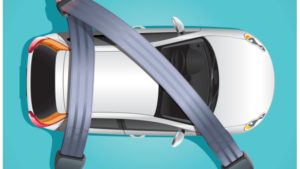
Having a car insurance policy is mandatory and so many of you feel that the policy is an unnecessary expense. But when there is an accident and you face damages, you realise the importance of a car insurance plan. It is because, such damages result in a car insurance claim where the insurance company pays for the financial loss. Making a car insurance claim is simple. It involves some simple steps and the insurer pays for the losses incurred. However, many of you are clueless when it comes to car insurance claims. You don’t know when does a claim occur and how to claim car insurance. So, here’s a complete guide to car insurance claims for your understanding.
When does a claim occur?
A claim is said to occur when –
- You cause bodily injury to any third party
- A third party dies due to an accident involving your car
- You damage any third party property
- Your car suffers damages and needs repairs
- Your car is stolen
- Your car is damaged beyond repairs
In any one or more of the above-mentioned incidents, your car insurance policy becomes eligible to pay for the financial costs faced.
Making a claim
Here is a step-by-step car insurance claim process of your car insurance policy for the above-mentioned contingencies –
If your car suffers any damage
- Inform the insurance company.
This is the first step which you should take in the event of a claim. If the insurance company is not informed of the contingency and you take any action yourself, making a claim later on would not be entertained by the company. So, as soon as you face any mishap, call the company’s 24*7 helpline number and register your claim.
- Provide the details of the accident
Upon being intimated, the insurance company would want to know the details of the incident. Describe the details completely for the company to understand the nature of your claim. The company would also require the insurance policy number, license number of the individual driving the car and the vehicle registration number. You should keep these details handy when informing the insurance company of a claim.
- Avail the claim reference number and take the car to the nearest garage.
After you describe the incident, the company would provide you with a claim reference number. This number should be noted and used in future claim follow-ups. The location of the nearest preferred garage would also be provided to you by the company. You should take the car to the nearest garage. In case of severe damages when the car cannot be moved, the company might also arrange for towing facilities to take your car to the nearest garage.
- Wait for the surveyor
Once the car reaches the garage, the insurance company arranges for a surveyor visit. The surveyor comes, assesses the damages of the car, prepares a claim estimate and submits it with the insurance company. Only after the surveyor’s report is submitted and approved by the company, would your claim be approved.
- Fill the claim form
You would have to take care of some paperwork to get your claim approved. The insurance claim form should be filled in and submitted with the insurance company. Important documents like the RC Book of the car, your driving license and copy of the policy document would have to be submitted with the claim form.
- Repairs Begin
Once the insurer approves the claim based on the surveyor’s report and your documents, repairs on your car begin. Once the repairs are completed, the bill is sent to the insurance company. The insurance company settles the bills directly with the garage.
- Pay the remaining claim and take delivery of the car
Some elements of the claim might be payable by you. For instance, there is a compulsory excess which has to be borne by you. Similarly, the depreciation on the replaced parts would be your out-of-pocket expenses. Pay the remaining claim which is not payable by the insurance company to settle the garage dues. Once the dues are settled, you can take delivery of your car.
For third party liability claims for car-owner
If any third party or property is harmed, the incident would be reported to the Motor Accidents Claim Tribunal (MACT). You would have to inform the insurance company and file a FIR with the police. The FIR is an important requirement in case of third party claims. If your car has also suffered any damages, you would have to follow the above-mentioned process. For third party damages, the insurance company would pay the claim based on the rulings of the tribunal.
Claim for stolen car
If the car is stolen, you should inform the company and file a FIR with the police. You would then have to fill and submit the claim form along with copies of the RC Book, driving license, intimation sent to RTO about the loss, policy document and the FIR. If the car is not located within three months of theft, the police issue a ‘Non-Traceable Report’. You present this certificate to the insurer. You should also transfer the RC book of the car in the insurer’s name and issue a letter of subrogation giving up all ownership rights to the car. After receiving and analysing the documents, the insurer would settle the claim. In most of theft cases, the insurance company demands you to submit both the original and duplicate car keys to eliminate the possibility of theft due to your negligence of leaving the key in the car.
Read more about how video uploads are making claims faster.
Also have a look at the video below to understand how to register for car insurance claims
Types of claims
Claims under your car insurance policy can be settled directly by the insurer or through reimbursement. Let’s understand –
- Cashless claims – when the insurer directly settles the claim, it is called cashless claim. This is possible only if you get your vehicle repaired at a garage which is tied-up with the insurance company.
- Reimbursement – if you take your vehicle to any other garage which is not tied-up with the insurer, your claim would be settled through reimbursement. You would have to get the car repaired at your expense. Then, you have to submit the repair bills to the insurance company. The company assesses the bills and reimburses you for the expenses you incurred.
So, this was the entire guide to making a successful car insurance claim. You should follow the process for easy claim settlements. Moreover, look out for exclusions. If you make a claim for an excluded cost, the claim would be rejected. So, understand the coverage of your policy before you make a claim.
Read more about most common exclusions in car insurance policy.
Read more about car insurance terminologies you should know.
Read more about types of car insurance covers and their benefits.




























